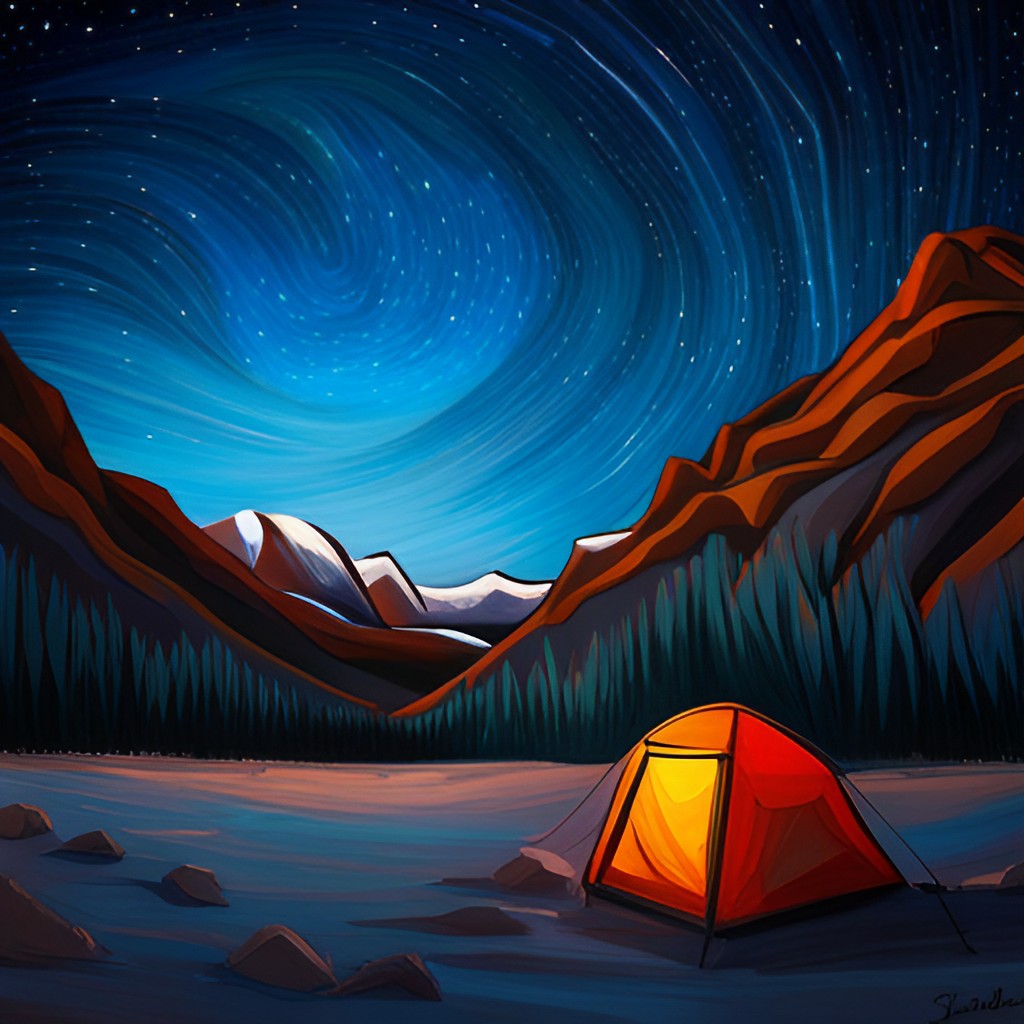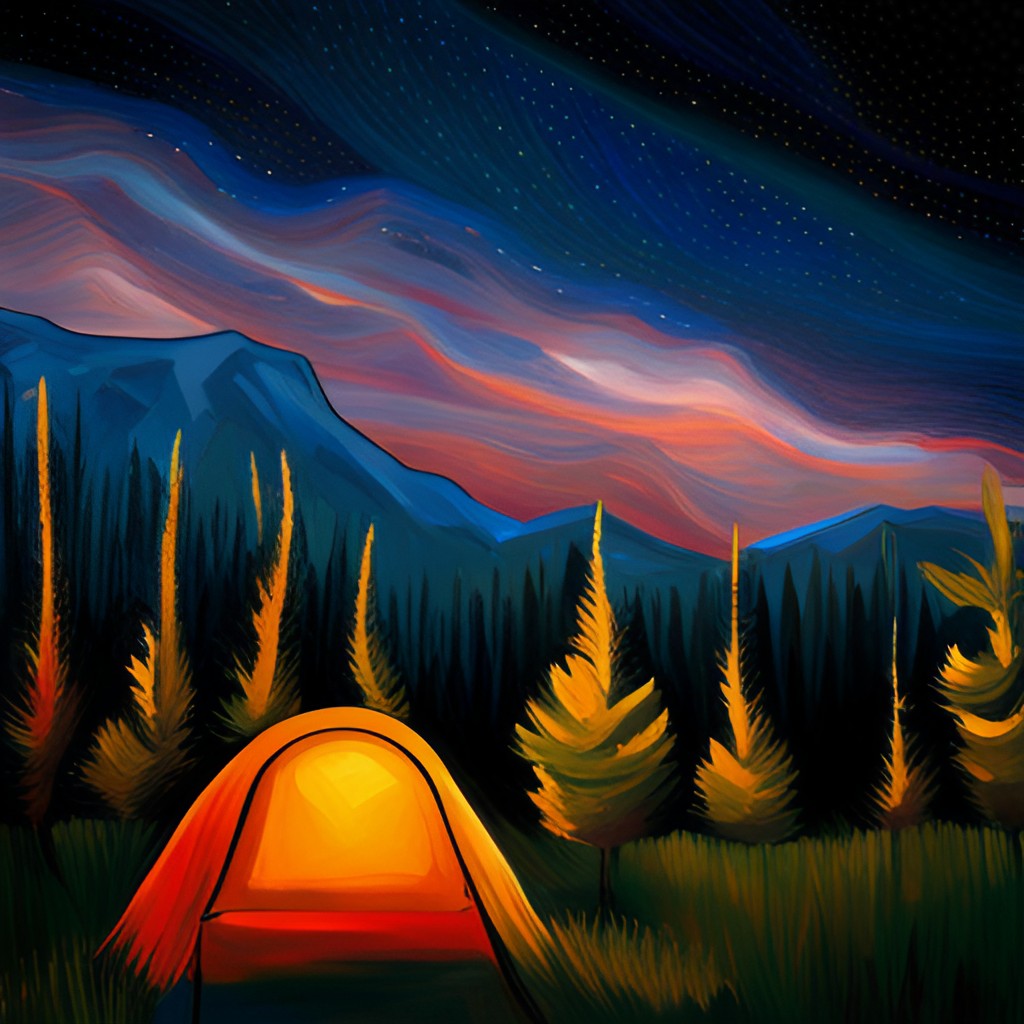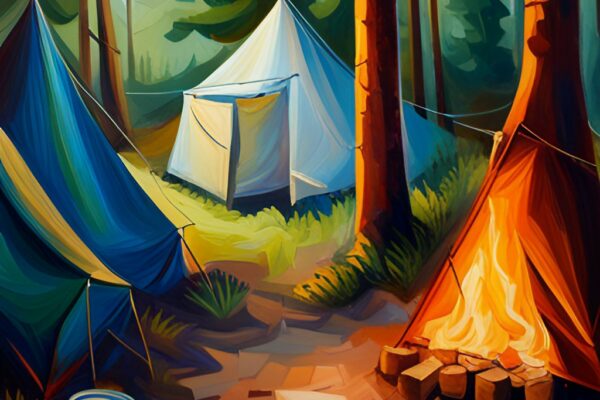
Stargazing is a timeless pursuit that transcends age, culture, and background, enchanting all who gaze upon the night sky. The allure of constellations, those celestial patterns woven across the canvas, has captivated humanity for centuries.
In this reimagined article, we embark on a celestial journey to explore five constellations that hold universal appeal. We aim to provide a more engaging and informative experience, revealing enchanting stories and practical tips that will empower everyone to unlock the wonders of the night sky.
So, let us set the stage for stargazing and embrace the awe-inspiring beauty of these celestial marvels that await our discovery.
- 1. Orion: The Hunter – 5 Constellations To Look Out for When Camping
- 2. Ursa Major: The Great Bear – 5 Constellations To Look Out for When Camping
- 3. Cassiopeia: The Queen – 5 Constellations To Look Out for When Camping
- 4. Leo: The Lion – 5 Constellations To Look Out for When Camping
- 5. Draco: The Dragon – 5 Constellations To Look Out for When Camping
- Conclusion – 5 Constellations To Look Out for When Camping
1. Orion: The Hunter – 5 Constellations To Look Out for When Camping
As we gaze at the night sky, one constellation immediately commands our attention Orion, the Hunter. Its prominence and distinctive features make it one of the celestial sphere’s most recognizable and captivating sights.
In Greek mythology, Orion was a mighty hunter known for his unparalleled strength and prowess. Legend has it that he was the son of the sea god Poseidon and the huntress Euryale. Orion’s remarkable story and association with the stars have traversed time and culture, resonating with worldwide civilizations.
To truly appreciate the magnificence of Orion, let us delve into its stars and notable features. One of the most prominent stars in this constellation is Betelgeuse, a red supergiant that marks Orion’s right shoulder. Its fiery hue adds to the visual allure of the night sky. Another dazzling star in Orion is Rigel, situated at Hunter’s left foot. Rigel shines with remarkable brilliance, showcasing its blue-white radiance.
Among the distinctive features of Orion is its “belt,” a row of three bright stars that form a straight line across Hunter’s midsection. This celestial belt, consisting of Alnitak, Alnilam, and Mintaka, serves as a guidepost for stargazers, pointing the way to other cosmic wonders.
Locating and identifying Orion in the vast expanse of the night sky is a rewarding experience. During winter evenings in the Northern Hemisphere, Orion takes center stage, soaring high above the horizon. Look for its iconic hourglass shape, with Betelgeuse and Rigel marking the shoulders and Mintaka, Alnilam, and Alnitak forming the belt. These bright stars act as beacons, guiding our eyes toward the mesmerizing constellation.
For those in the Southern Hemisphere, Orion can be observed during the summer months, although it will appear upside down compared to its Northern Hemisphere counterpart. Whether you are using the naked eye or binoculars, locating Orion is a delightful adventure that unveils the splendor of the night sky.
So, embrace the thrill of stargazing and allow the mighty Orion to captivate your imagination as you embark on a journey through the vast cosmic tapestry.
2. Ursa Major: The Great Bear – 5 Constellations To Look Out for When Camping
Now, let us venture into the enchanting world of Ursa Major, the Great Bear constellation. Stepping away from the tales of mighty hunters, Ursa Major invites us to embrace the allure of a celestial bear and the captivating legends surrounding it across diverse cultures.
In Greek mythology, Ursa Major represents Callisto, a nymph who caught the eye of Zeus. Transformed into a bear by a jealous Hera, Callisto was immortalized in the night sky as Ursa Major. This mythological narrative intertwines with countless other legends and interpretations from cultures around the globe, each weaving its own stories of this majestic bear.
Within the constellation of Ursa Major, one finds the easily identifiable asterism known as the Big Dipper. Comprised of seven bright stars, this celestial formation resembles a ladle or dipper suspended within the expanse of the night sky. The Big Dipper’s prominence and unmistakable shape make it an invaluable guidepost for novice and seasoned stargazers.
The significance of the Big Dipper extends beyond its visual appeal. Its orientation serves as a celestial compass, assisting navigators in finding their way. By drawing an imaginary line through the two stars at the end of the ladle, Dubhe and Merak, and extending it for about five times their distance, stargazers can locate the North Star, Polaris. Polaris, a part of Ursa Minor, shines as a reliable guide for navigation, aiding travelers in determining their direction.
One can search for the Big Dipper, a celestial signpost, to find Ursa Major. During the spring and summer months, Ursa Major graces the night sky in the Northern Hemisphere, positioned prominently above the horizon. Its distinctive shape, with the ladle-like formation of the Big Dipper, serves as a celestial landmark, leading us to the grandeur of the Great Bear.
Whether you are embracing the rich mythology associated with Ursa Major or utilizing its stars for navigation, this constellation invites us to look upward and discover the wonders of the night sky. So, let the Great Bear be your guide as you traverse the vast cosmic realm, uncovering its mysteries one star at a time.
3. Cassiopeia: The Queen – 5 Constellations To Look Out for When Camping
As we continue our celestial journey, we encounter the elegant Cassiopeia, the Queen constellation, gracing the night sky with her regal presence. Positioned prominently in the heavens, Cassiopeia beckons us to uncover the myths and wonders surrounding her celestial beauty.
In Greek mythology, Cassiopeia was a queen known for her extraordinary beauty. However, her vanity and pride led to a series of misfortunes. Legend has it that she boasted of her daughter Andromeda’s beauty, outraging the sea god Poseidon. As a result, Poseidon unleashed the monstrous sea creature Cetus upon the kingdom. Andromeda was bound to a rock as a sacrifice to appease the enraged deity. Eventually, she was saved by the hero Perseus, with whom she would find everlasting love.
Cassiopeia’s celestial depiction mirrors her mythological origins, as her stars form a distinctive “W” or “M” shape, resembling the queen’s majestic throne. This shape adds to the allure and recognition of the constellation, allowing it to stand out amidst the starry tapestry. The exact interpretation of the shape may vary across cultures, with some perceiving it as an “M” for “mother” and others as a “W” for “woman.”
Identifying Cassiopeia in the night sky is a rewarding endeavor. During autumn and winter in the Northern Hemisphere, Cassiopeia becomes prominently visible. Look toward the northern horizon, and you will find this celestial queen gracefully positioned, seemingly suspended between other constellations. Her relationship with different neighboring constellations, such as Andromeda, Perseus, and Cepheus, enhances the cosmic narrative and invites further exploration.
To locate Cassiopeia, envision an imaginary line connecting the stars in the Big Dipper’s handle. Extend this line, and you will encounter the bright star, Polaris, the North Star. Cassiopeia lies opposite Polaris, forming a celestial dance around the North Star. The “W” or “M” shape of Cassiopeia can serve as a guidepost for identifying this captivating queen amidst the stellar panorama.
So, let us gaze upon the celestial elegance of Cassiopeia, the Queen, and immerse ourselves in the mythology that unfolds in her starry realm. By tracing her regal form and understanding her relationship with neighboring constellations, we embark on a voyage of discovery, unearthing the wonders that adorn the night sky.
4. Leo: The Lion – 5 Constellations To Look Out for When Camping
Prepare to embark on a celestial journey to encounter the mighty Leo constellation, often called the Lion. This majestic celestial figure has captivated cultures across the globe with its association with nobility, bravery, and cosmic splendor.
Throughout history, Leo has been linked to tales of valor and nobility in various cultures. In ancient Egyptian mythology, the Lion represented the powerful deity Sekhmet, embodying both protection and destruction. In Greek mythology, Leo was associated with the Nemean Lion, a fearsome creature slain by the hero Heracles (Hercules) as one of his twelve labors. These stories and interpretations reinforce Leo’s symbolism as a symbol of courage, strength, and regal stature.
At the heart of Leo lies the star Regulus, which translates to “little king” or “prince” in Latin. This bright luminary represents Lion’s heart as the celestial anchor. Regulus has long been considered a royal star, evoking a sense of majesty and authority within the constellation.
To locate Leo in the night sky, identify the Big Dipper, which we previously explored in the Ursa Major section. By envisioning an imaginary line that extends beyond the handle of the Big Dipper, we arrive at the bright star Arcturus in the constellation Bootes. Continue this line, and it leads us to Leo. Another helpful landmark is the constellation of Orion, as Leo lies to the east of this mighty hunter.
One distinctive feature within Leo is the “sickle,” an asterism resembling a backward or reversed question mark. The sickle represents the Lion’s head or mane, consisting of several bright stars. This recognizable pattern aids stargazers in identifying the constellation amidst the countless points of light.
Once you’ve successfully located Leo, take a moment to appreciate its regal magnificence. Scan the celestial landscape for sickle asterism and allow your imagination to wander among the stars, envisioning the noble lion in the cosmic expanse.
Embrace the spirit of bravery and royalty as you traverse the celestial savannah of Leo, and let the tales of valor inspire your cosmic exploration. By beholding Lion’s celestial splendor, we connect with the enduring stories that have fascinated humanity for centuries, reminding us of our innate strength and courage.
5. Draco: The Dragon – 5 Constellations To Look Out for When Camping
Prepare to be enthralled as we unveil the mythical allure of Draco, the Dragon constellation, with its winding path through the stars. This captivating celestial creature has inspired ancient civilizations with its serpentine form and storied symbolism.
Draco’s presence in ancient folklore spans diverse cultures. In Greek mythology, Draco is associated with Ladon, the hundred-headed dragon who guarded the golden apples of the Hesperides. In Norse mythology, the constellation represents Nidhogg, a mighty dragon that gnaws at the roots of the world tree Yggdrasil. These tales and interpretations highlight Draco’s powerful and enigmatic nature, forever intertwined in the tapestry of human imagination.
Draco’s distinct shape weaves its way across the night sky, resembling a winding path or a sinuous serpent. The constellation connects various celestial figures, including Ursa Minor, the Little Bear, and Ursa Major, the Great Bear. It is as if Draco guards the celestial realm, encircling these constellations with its ethereal presence.
To find Draco, locate the North Star, Polaris, which resides in Ursa Minor. Draw an imaginary line from Polaris through the stars Dubhe and Merak in the Big Dipper, extending it beyond Ursa Major. This path leads us to the awe-inspiring Draco, whose body traverses the heavens mesmerizingly.
As you scan the night sky, look for the distinctive pattern formed by Draco’s stars. The head of the dragon lies near the stars Eltanin and Rastaban, while its body winds its way through the stars that make up its serpentine form. Take a moment to trace this cosmic creature, allowing your imagination to soar with the ancient tales that have revered Draco throughout the ages.
Draco’s divine presence invites us to embrace the mysteries of the night sky, walk in the footsteps of ancient civilizations, and marvel at the enduring power of myth and folklore. By following the winding path of the Dragon, we connect with the rich tapestry of human history and our collective fascination with the mystical and extraordinary.
So, let the celestial Dragon guide your gaze and ignite your curiosity as you explore the vast reaches of Draco. Embark on this cosmic journey, and unlock the secrets of the night sky, one star at a time.
Conclusion – 5 Constellations To Look Out for When Camping

As we conclude our exploration of the celestial marvels, we are reminded of the profound allure that constellations hold for people across cultures and generations. The night sky beckons us to step outside, lift our eyes upward, and immerse ourselves in the wonders above. These five constellations, Orion, Ursa Major, Cassiopeia, Leo, and Draco, are accessible treasures waiting to be discovered by all.
We hope this article has ignited a spark of curiosity, inspiring you to venture into the great outdoors and embark on your own stargazing adventures. May you find joy in unraveling the mysteries of the cosmos, and may the celestial tapestry continue to captivate and enchant your senses.
Recommended Reading – Conclusion
Internal:
Exploring The Top 10 Scenic Tent Camping Destinations In The US (tentcampingtrips.com)
External:
5 Constellations Everyone Can Find – Eureka (johnsonoutdoors.com)
The Ultimate Guide to Observing the Summer Sky (Northern Hemisphere) | Celestron














